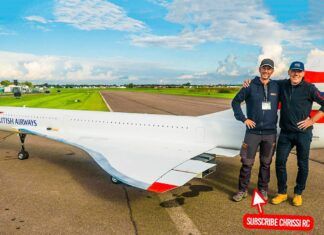NTSB Identification: CHI98LA055.
The docket is stored in the (offline) NTSBImaging System.
Accident occurred DEC-06-97 at CAIRO, MO
Aircraft: Piper PA-24, registration: N8452P
Injuries: 1 Minor.
The pilot had climbed to 5,500 ft MSL & had trimmed the airplane at cruise powersettings. He set the GPS navigation system for a direct flight, then engaged the autopilot& switched the fuel selector to the left auxiliary fuel tank. He remembered passingHerrington, KS, at which time, he set his radios for arrival at Topeka, Ks. From thatpoint, he could not remember anything else about the flight until he “awoke” ina flat hay field near Cairo, MO. (The airplane had touched down in a wings level attitudeand slid about 525 ft before hitting a fence & small trees.) When the pilot”initially awoke,” he was confused & thought he was still airborne.Eventually, he walked to a farm house & after waiting another 1 to 1-1/2 hr, anambulance arrived to take him to a hospital. Subsequently, blood was drawn. Toxicologytests of his blood showed 26.8% saturation with carbon monoxide. Inspection of theairplane revealed the right muffler had a crack around one of its seams, which allowedexhaust fumes into the cabin heater housing & into the cabin. The airplane hadrecently been taken to an airplane service center for an annual inspection. The pilotdecided to fly the airplane before the annual inspection had been signed off.
Probable Cause
a fractured muffler, failure of the owner/pilot to ensured that the annual maintenanceinspection had been completed before flight, and subsequent pilot incapacitation due tocarbon monoxide poisoning.
On December 6, 1997, at 0930 central standard time, a Piper PA-24, N8452P, wassubstantially damaged when it impacted the ground near Cairo, Missouri. The 14 CFR Part 91flight originated from Great Bend, Kansas, at 0710, en route to Topeka Forbes Airport,Topeka, Kansas. The pilot fell asleep and the airplane ran out of fuel. The pilot had atoxic level of carbon monoxide in his blood. The pilot received minor injuries. Visualmeteorological conditions prevailed and no flight plan had been filed.
The pilot reported that he had climbed to 5,500 feet mean sea level and trimmed theairplane at cruise power settings. He set up the GPS navigation system for a direct flightto the Topeka Forbes Airport, and then engaged the autopilot. He reported that he switchedthe fuel selector to the auxiliary fuel tank. He reported that he remembered passingHerrington, Kansas, at which time he set up his radios for arrival at the Topeka ForbesAirport. He reported that he could not remember anything else about the flight until heawoke in a hay field in Cairo, Missouri.
He reported that when he awoke he was confused. He thought he was still airborne andmaking an approach to the airport. When he finally became oriented he realized he was onthe ground. He walked to a farmhouse where he received assistance.
The pilot was taken to a hospital. It was determined that the pilot had succumbed tocarbon monoxide poisoning. His blood level indicated a toxic level of 26.8%.
The wreckage path indicated that the airplane had touched down in a flat hay field. Theairplane skidded on its belly for about 525 feet before hitting a wire fence and smalltrees. There was no indications that the airplane’s wings hit the ground during the 525foot skid.
The airplane was inspected. The right muffler had a crack around one of its seams,which would allow exhaust fumes into the cabin heater housing and into the airplane’scabin.
The airplane had recently been taken to an airplane service center for an annualinspection. The pilot decided to fly the airplane before the annual inspection had beencompletely signed off.

































